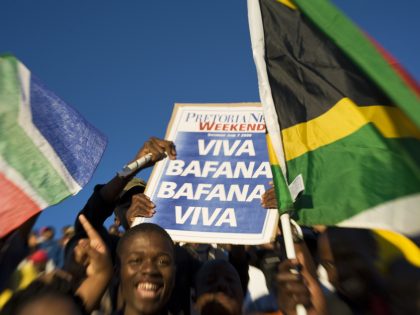Kehinde Wiley Goes To Paris
The American artist says he wants to tackle Françafrique; to turn it on its head. But in the process, he can't help repeat stereotypes and artificial divisions.

From Kehinde Wileys' "World Stage."
Perhaps it is simply through good timing that I am rereading Toni Morrison’s Playing in the Dark and lingering over one sentence: “The subject of the dream is the dreamer.” Such it is with artist Kehinde Wiley’s continued complex relationships with the Black body.
Wiley’s “World Stage” series has come to Paris. This time, he attempts to tackle Françafrique by exhibiting work featuring locally sourced male models from various former African colonies and then provocatively bringing the portraits back to France. The portraits are beautiful, colorfully rich and in some cases through the background, clearly situated in the model’s culture of origin. He wants to “turn France on its head.”
Yet, to the French press’s delight, the assumed position of power in Wiley’s work is, as always, European.
The urban magazine, A Nous Paris, wrote that “with [Wiley], the B-Boys have the allure of majesty and the painter, Titian, could get out of the ghetto.” Most importantly, they note, in Wiley’s portraits we have the “codes” of hip-hop, uncouth culture as they suggest in this context recognized through baggy jeans and sneakers, and the “codes” of the assumed art greats, recognized through symbolic stances and gestures.
Wiley himself has openly stated that often in his work, models were fabricated and the clothing was invented through artistic liberties. However, this exhibition features a superb video accompaniment featuring many of the young men posing in the pieces. What becomes apparent quickly is how relaxed Wiley was amongst the youth of North Africa. For him, these possible revolutionaries have ruffled the shackles of a former oppressor and stand basking in a culture rich and all their own. Except that they must assume the pose of the former.
Like critics have pointed out before, Wiley seems either reluctant or unwilling to do anything but skim the surface of the societal issues aroused through his work. The aesthetics of the cultures he encounters are dismissed, as in Israel, or leaving the work almost always un-localized.
It becomes even more problematic as Wiley recounts his traverse into what he endearingly calls “Black Africa”. As he ventures deep into the dark, he recounts how he encounters people in Gabon who seem to cling heavily onto the cultural legacy the French left behind. None of that was discussed for the Arab former colonies, but no matter. He goes further, wondering, what must it be like for these Black Africans to be encountering a Black American?
And so it goes. From Congo Brazzaville, where he says he is arrested for taking pictures during an election season, and onto Cameroon. Black Africa is lumped together, and the dreamer becomes the subject of his projection. Wiley himself is the son of a Nigerian father. Raised by his African-American mother in California, he met his father in a dramatic fashion when he was 20. So too was the landscape he encountered. How to approach Nigeria? Perhaps by othering it.
Wiley had almost intimately discussed Morocco and Tunisia as the separate entities that they are. But not so for Black Africa. Instead of questioning what it must have been like for Arab youth to be encountered by a gay, Black American, he questions only “Black Africa.”
The mosaics and market found fabrics featured in the work featuring North Africans is superimposed with the power notions of European derived artistic invention. The portraits featuring sub-Saharan Africans are triple imposed. Dutch wax fabrics, the same to be found from Ghana down to Cameroon, lace over the young men in front of them. Unlike the Arab youth, these West Africans clutch tools.
A broom, a rod. What to do with the hands of men who you feel to hold no power at all, even as they continue to fight for recognized cultural progression against an assumed background of French dominance? How do you read the French inclusion, and now American reading, of their space? They can be read simplistically as weapons. Or they can be read as a final gasp of frustration from one not knowing how to read an unknown place of origin.



















